Sammy Savos on Making a Graphic Memoir with Holocaust Survivor, the late Estelle Nadel | Guest Post
In this guest post, artist Sammy Savos details her creative process and discusses her collaboration with Holocaust survivor Estelle Nadel to create the graphic memoir The Girl Who Sang. "I’m very grateful that she was able to see the finished book, hold it in her hands, and tell me how happy she was with it."
As a kid, I never anticipated publishing a nonfiction work. I dreamt of stories where I drew endless talking animals and magical worlds, while reading comics and watching cartoons of the same genre. I dreaded any school assignments that required anything resembling interviewing someone. As I got older, I branched out in my art and writing abilities (while still adoring fantasy and animals!) and became braver in chatting with strangers, but still had no plans to work in nonfiction.
Then as an adult, when the opportunity to work with Estelle Nadel—a Holocaust survivor seeking to tell her life story through a graphic novel—was sent to me by my editor, I had a strong desire to take it on and connect with her. I’m Jewish myself, and even from the same region as Estelle, and it’s always been important to me to include aspects of my culture, history, or mythology into my personal work. I had already wanted to make a graphic novel that included Judaism, so being matched with Estelle was just perfect. I wanted to do a story that mattered, and Estelle’s story mattered.
 The first time I spoke to Estelle I was so nervous that I forgot my own age when she asked me how old I was. But Estelle was so open and so kind, inviting me to ask her anything I wanted, that the conversation quickly became comfortable. I asked her many, many things.
The first time I spoke to Estelle I was so nervous that I forgot my own age when she asked me how old I was. But Estelle was so open and so kind, inviting me to ask her anything I wanted, that the conversation quickly became comfortable. I asked her many, many things.
I wanted to get this right. Not only is telling accurate historical accounts of the Holocaust extremely important, I also wanted to ensure that what Estelle read and saw on the page felt like home, and for her family to ring true to life. To do that, I interviewed her with a variety of questions ranging from what materials the walls and floors of her childhood home were made of to the ways in which her family showed love to one another. How often did her brothers cry? How did they react when Estelle was to be adopted and separated from them after everything they went through to survive together? I had to ask her very intimate questions, and it was these kinds of questions that allowed me to depict the truest and rawest emotions throughout Estelle’s story.
The first task of making this book was settling on the style and designing Estelle’s immediate family members. Initially, my editor and I considered doing the book in a limited color palette in shades of blue, but we ultimately decided to go with full color. This helped flesh out the story fully and was a better option for readers to be able to relate and better see themselves in Estelle and her family.
There were other challenges in terms of research and reference with telling a story set in a time before I was born and in a place I’ve never been. Wherever possible, I used photos from Estelle’s personal collection, or the documentaries her nephew Norman Feld created as reference, and when there was no visual reference, I went off of descriptions from Estelle. For example, this is a scan of a family photo I was given. I stylized them using these photos and Estelle’s own descriptions of each person.
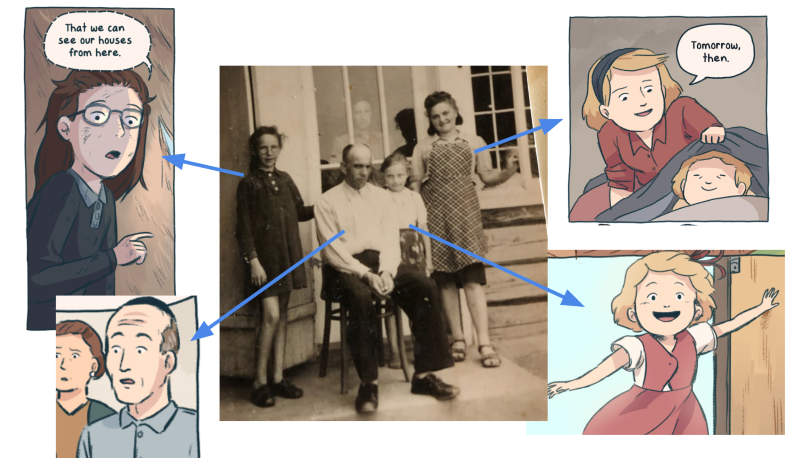 |
Photo depicts Estelle’s cousin Mala, Wujek (Uncle) Reiss, Estelle (then Enia), and her older sister Sonjia. |
But there were no photos of Estelle’s parents or eldest brother Moishe, only descriptions. Her father’s description stated that he was like a taller, thinner Tevye from Fiddler on the Roof, but with red hair.
My approach was similar when it came to locations and backgrounds.
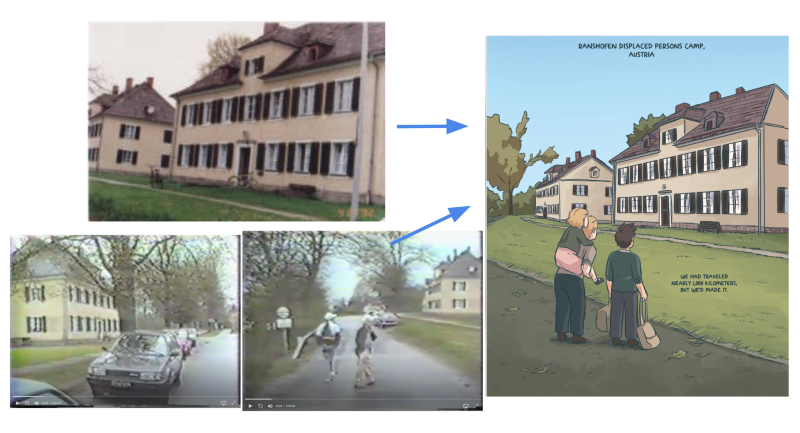 |
Photo and video taken in the 90s on Estelle’s trip with her siblings back to Poland. Filmed by Norm Feld. |
When those things weren’t possible or weren’t enough, I collected folders of images from my own research. I also used views of Borek today from Google Street View and mixed what I saw with Estelle’s descriptions of the past. Often this involved a lot of diagrams and mapmaking!
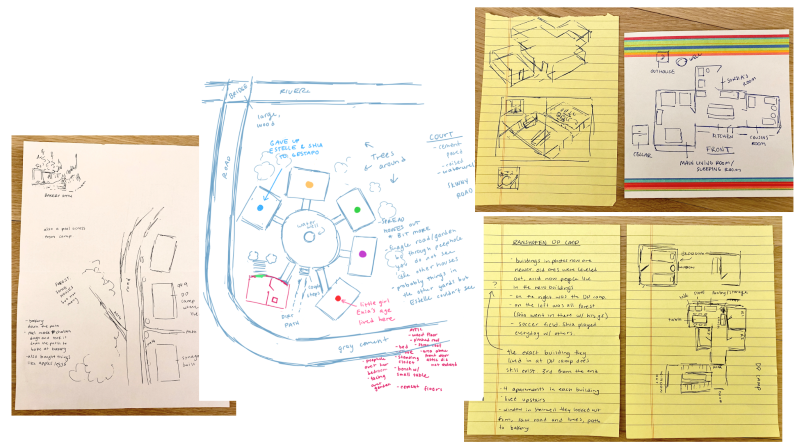 |
| Then there was the manuscript itself. Initially Estelle had a co-author who wrote the manuscript, and that’s what I was given when I joined the project. From there, Estelle and I collaborated in order to add scenes, flesh things out in the latter half of the book, and add an afterword. To organize all of this, I printed out the manuscript and fit it all into what I lovingly call “THE BINDER.” |
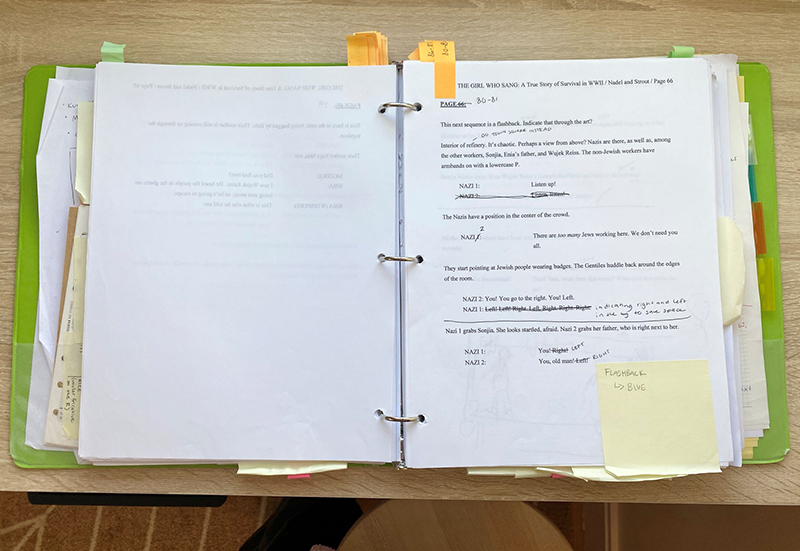 |
"THE BINDER" courtesy of Sammy Savos. |
Inside, I used a system of sticky notes and tabs to keep track of things like time skips, where characters aged and needed new designs, and where the suggested page count from the manuscript needed to be extended. In my personal planner, I made year-long sticky note calendars and kept records to remind me what religious or regular clothing Estelle’s family wore at specific times. Work on this book took nearly four years.
Sadly, this past November, Estelle peacefully passed away. I’ve been devastated that she’s gone, and like I said in an Instagram post about her passing, I wanted to get to know the current day Estelle as well as I know her younger self, Enia (Estelle’s name before coming to America). I badly wanted to meet her in person. While it feels strange and sad promoting the book without her, spreading her story is what she wanted, and so I’m going to do the best I can to put it out there and encourage people to read it. I’m very grateful that she was able to see the finished book, hold it in her hands, and tell me how happy she was with it.
Working on The Girl Who Sang has been the greatest honor and so, so special. I couldn’t have dreamt of a better book to be my first graphic novel, or a sweeter, more wonderful person to have created it with.
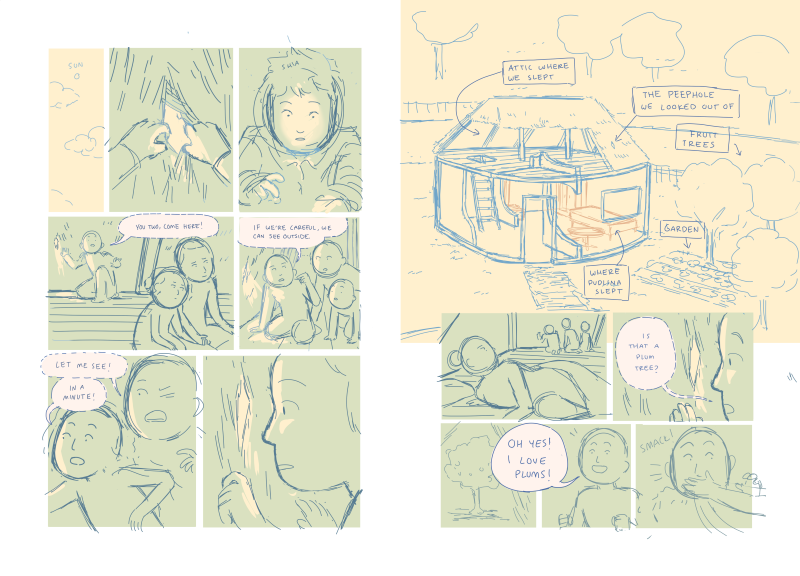 |
Excerpt page from The Girl Who Sang - sketched pages. Courtesy of Sammy Savos. |
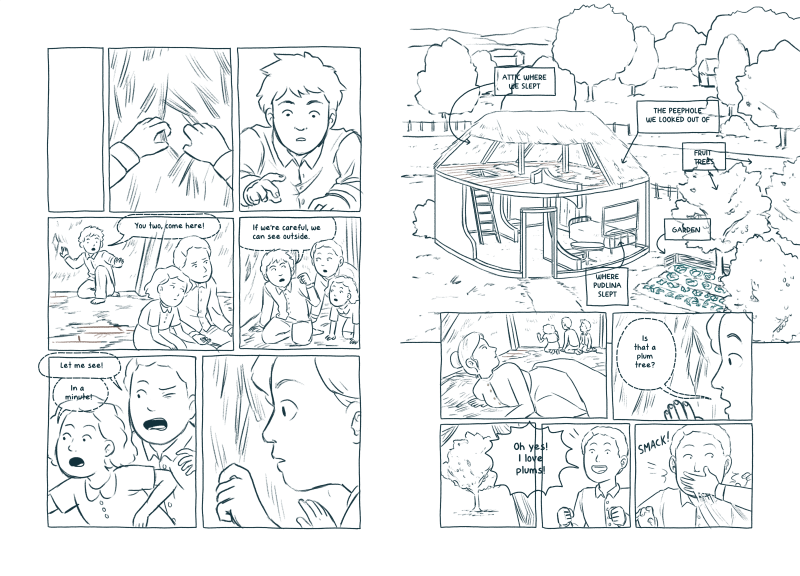 |
Excerpt page from The Girl Who Sang - inked pages. Courtesy of Sammy Savos. |
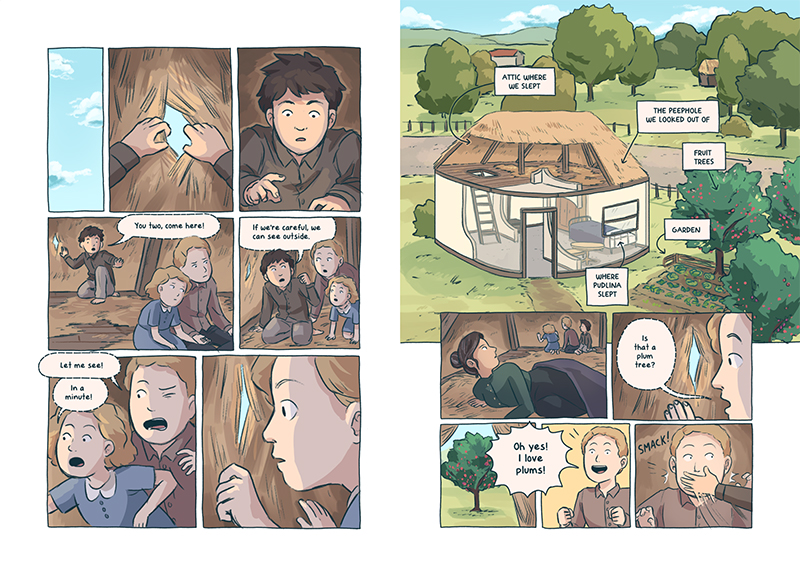 |
Excerpt page from The Girl Who Sang - final artwork with lighting. Courtesy of Sammy Savos. |
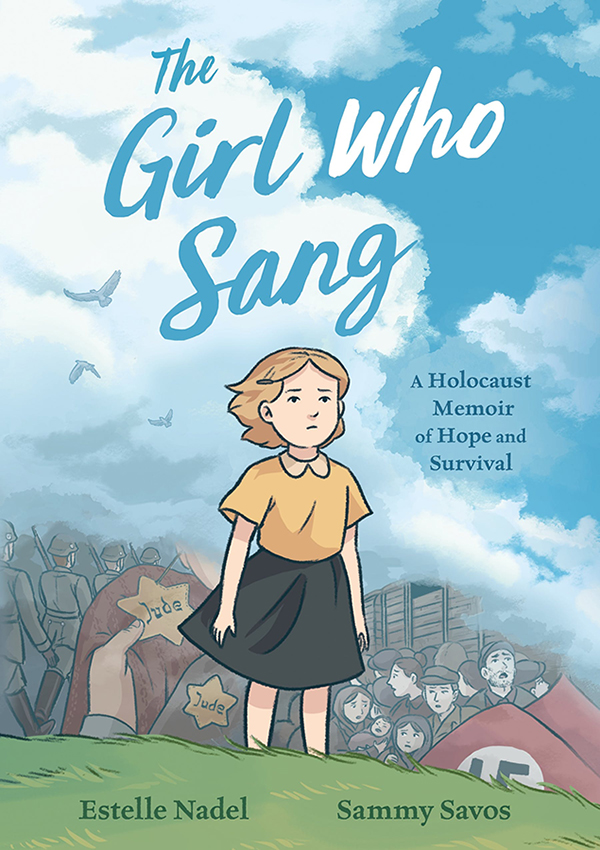 |
Cover for The Girl Who Sang. Artwork by Sammy Savos. |
The Girl Who Sang is out now and can be found in libraries and bookshelves everywhere.
Publisher: Roaring Brook Press.
Publication Date: 1/23/2024
ISBN: 9781250247766
RELATED
The job outlook in 2030: Librarians will be in demand
The job outlook in 2030: Librarians will be in demand
ALREADY A SUBSCRIBER? LOG IN
We are currently offering this content for free. Sign up now to activate your personal profile, where you can save articles for future viewing






Add Comment :-
Be the first reader to comment.
Comment Policy:
Comment should not be empty !!!